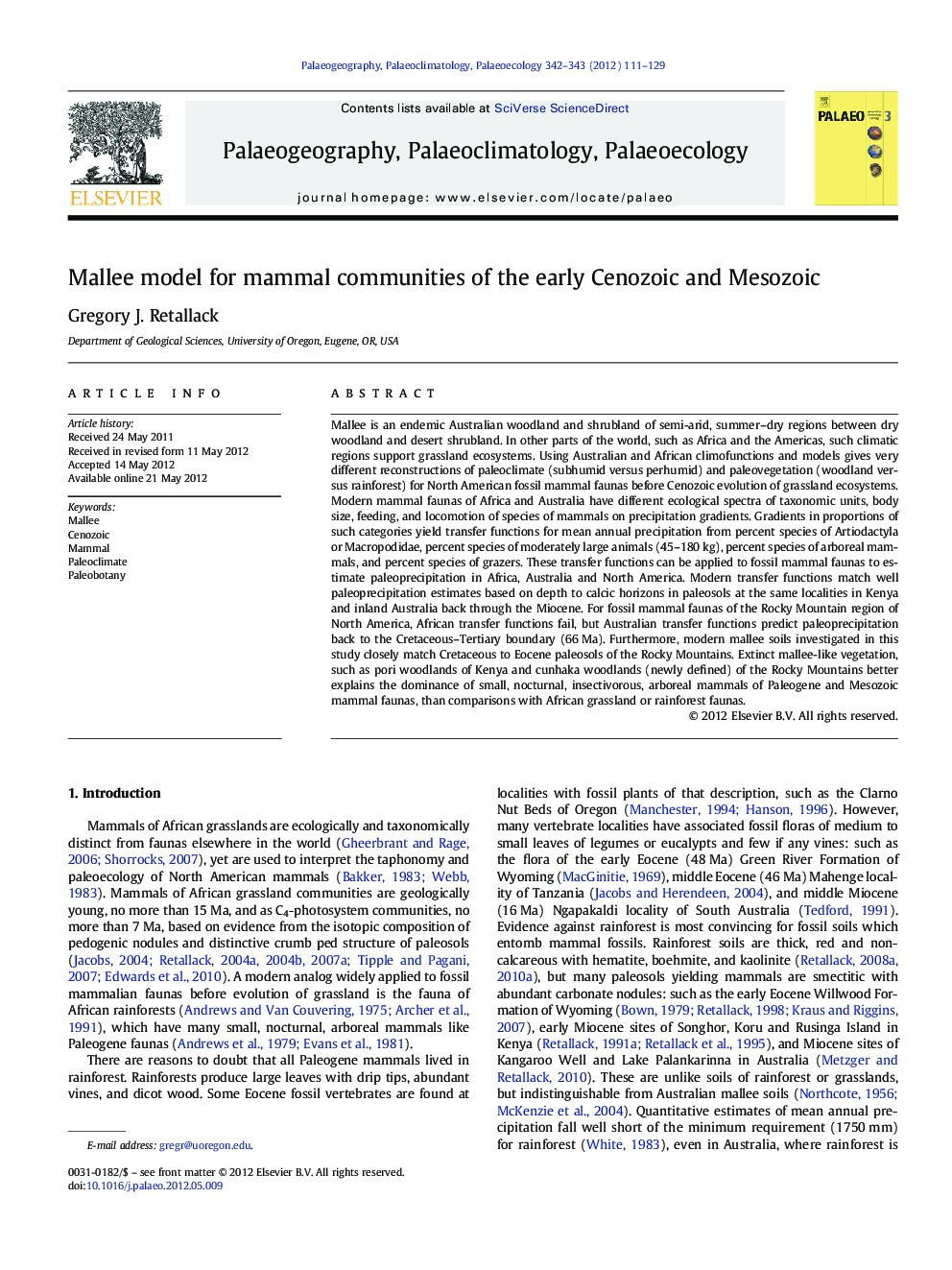| Article ID | Journal | Published Year | Pages | File Type |
|---|---|---|---|---|
| 4466860 | Palaeogeography, Palaeoclimatology, Palaeoecology | 2012 | 19 Pages |
Mallee is an endemic Australian woodland and shrubland of semi-arid, summer–dry regions between dry woodland and desert shrubland. In other parts of the world, such as Africa and the Americas, such climatic regions support grassland ecosystems. Using Australian and African climofunctions and models gives very different reconstructions of paleoclimate (subhumid versus perhumid) and paleovegetation (woodland versus rainforest) for North American fossil mammal faunas before Cenozoic evolution of grassland ecosystems. Modern mammal faunas of Africa and Australia have different ecological spectra of taxonomic units, body size, feeding, and locomotion of species of mammals on precipitation gradients. Gradients in proportions of such categories yield transfer functions for mean annual precipitation from percent species of Artiodactyla or Macropodidae, percent species of moderately large animals (45–180 kg), percent species of arboreal mammals, and percent species of grazers. These transfer functions can be applied to fossil mammal faunas to estimate paleoprecipitation in Africa, Australia and North America. Modern transfer functions match well paleoprecipitation estimates based on depth to calcic horizons in paleosols at the same localities in Kenya and inland Australia back through the Miocene. For fossil mammal faunas of the Rocky Mountain region of North America, African transfer functions fail, but Australian transfer functions predict paleoprecipitation back to the Cretaceous–Tertiary boundary (66 Ma). Furthermore, modern mallee soils investigated in this study closely match Cretaceous to Eocene paleosols of the Rocky Mountains. Extinct mallee-like vegetation, such as pori woodlands of Kenya and cunhaka woodlands (newly defined) of the Rocky Mountains better explains the dominance of small, nocturnal, insectivorous, arboreal mammals of Paleogene and Mesozoic mammal faunas, than comparisons with African grassland or rainforest faunas.
► Before evolution of grasslands, semi-arid dry woodland was like Australian mallee. ► Ecological spectra of mallee mammals match some Cretaceous and Paleogene faunas. ► Some putative rainforest mammal faunas more likely lived in mallee like communities.
